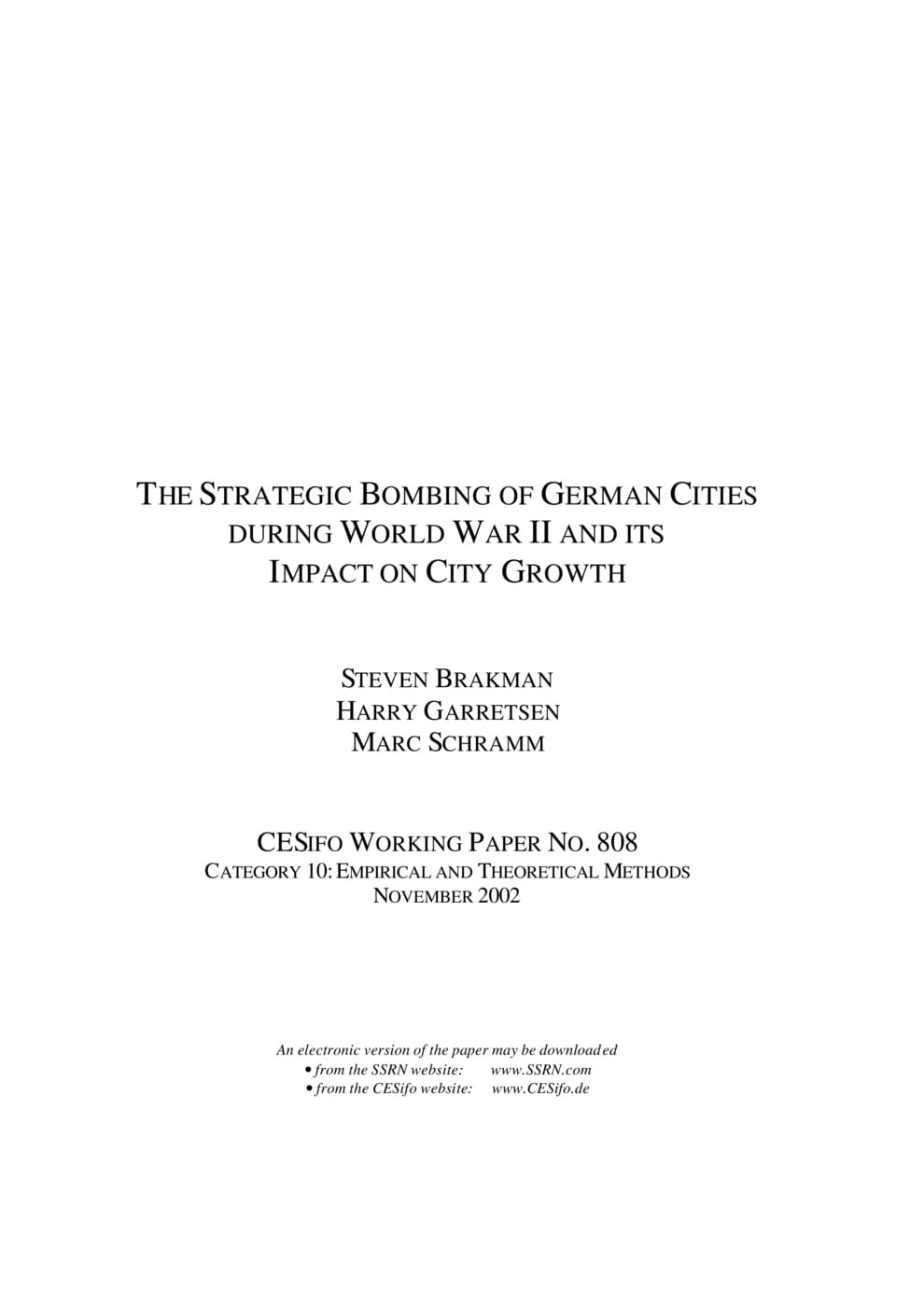The Strategic Bombing of German Cities during World War II and its Impact on City Growth
CESifo, Munich, 2002
CESifo Working Paper No. 808

We construct a unique data set to analyze whether or not a large temporary shock had an impact on German city growth and city size distribution. Following recent work by Davis and Weinstein (2001) on Japan, we take the strategic bombing of German cities during WWII as our example of such a shock. The goal of this paper is to analyze the impact of this shock on German city-growth and the resulting city-size distribution. If city-growth follows a random walk this would imply that the war shock had a permanent impact on German city-growth. If, however, as a second group of theories predicts, the random walk hypothesis is not confirmed this would mean that the war shock at most had a temporary effect on the city growth process. Our main finding is that city growth in western Germany did not follow a random walk, while city growth in eastern Germany did follow a random walk. Different post-war economic systems are most likely responsible for this outcome.